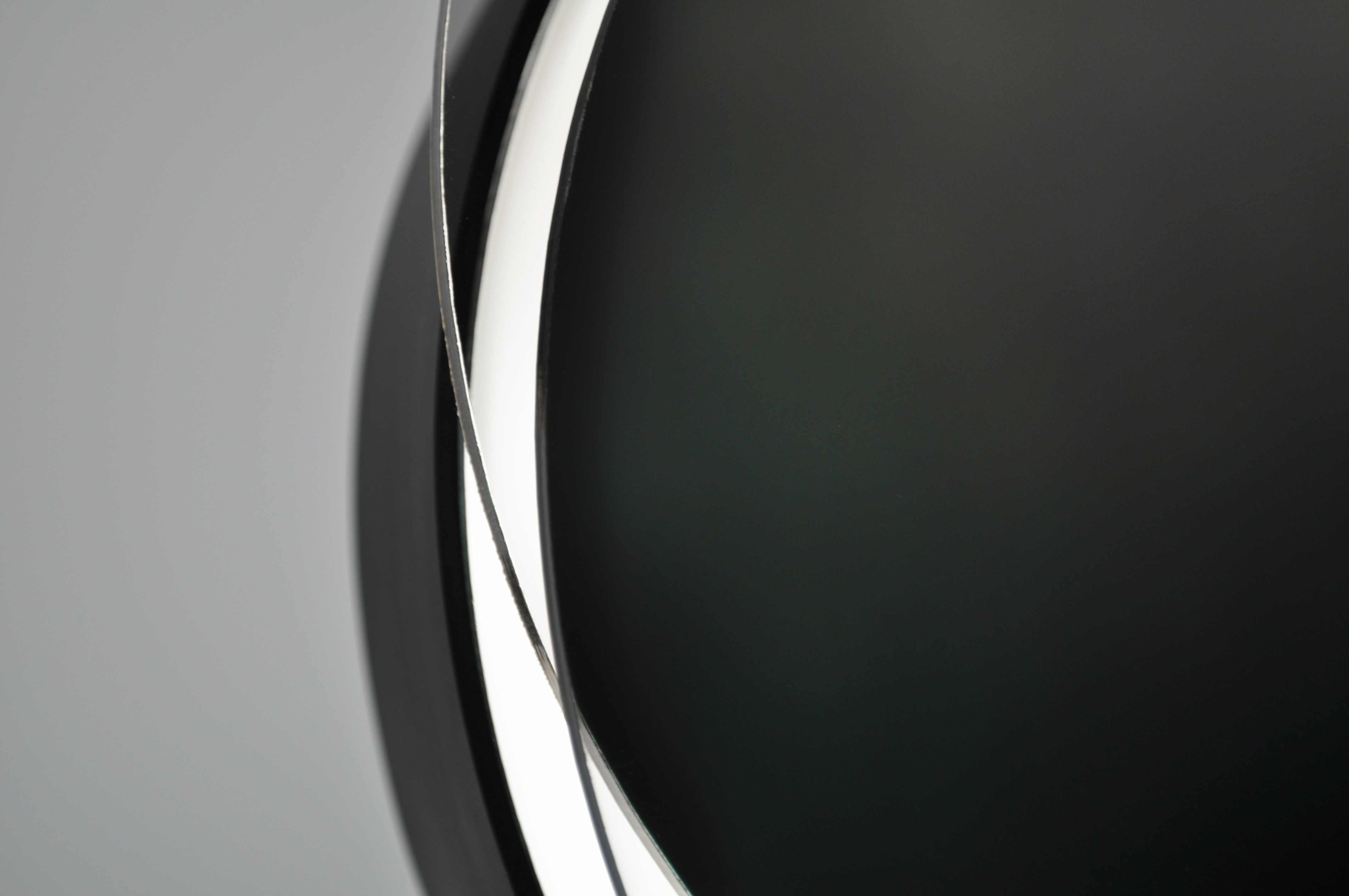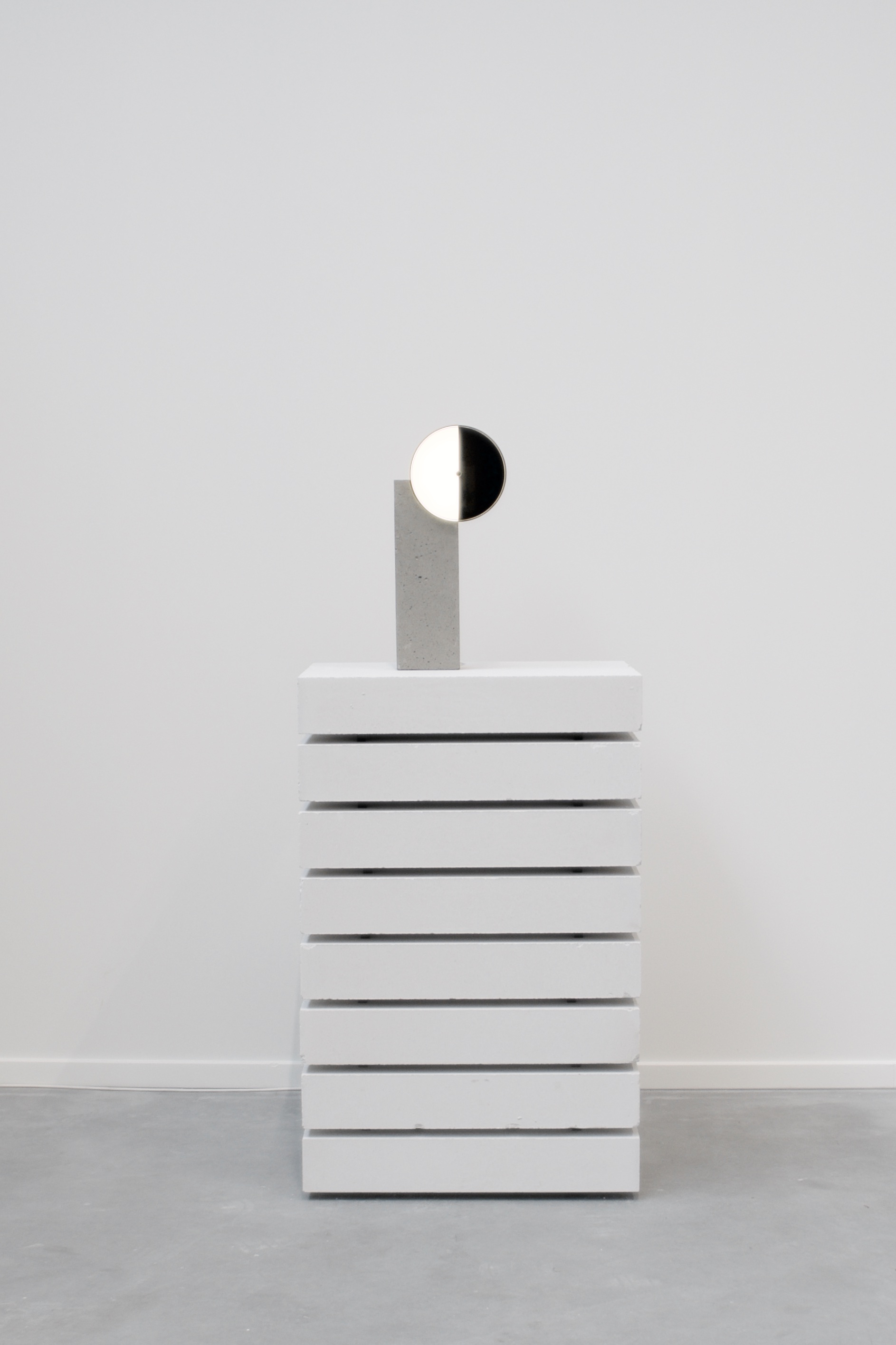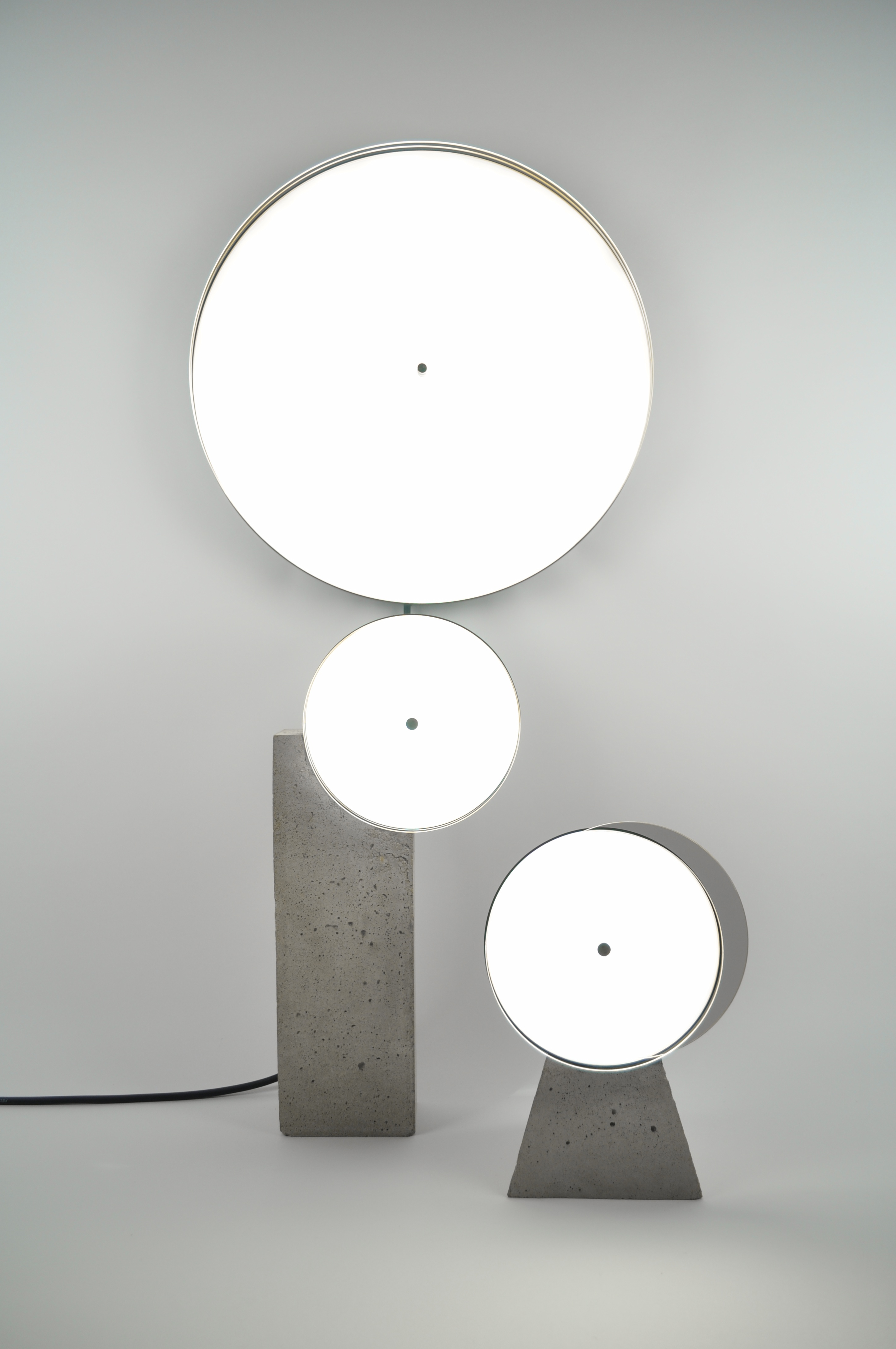
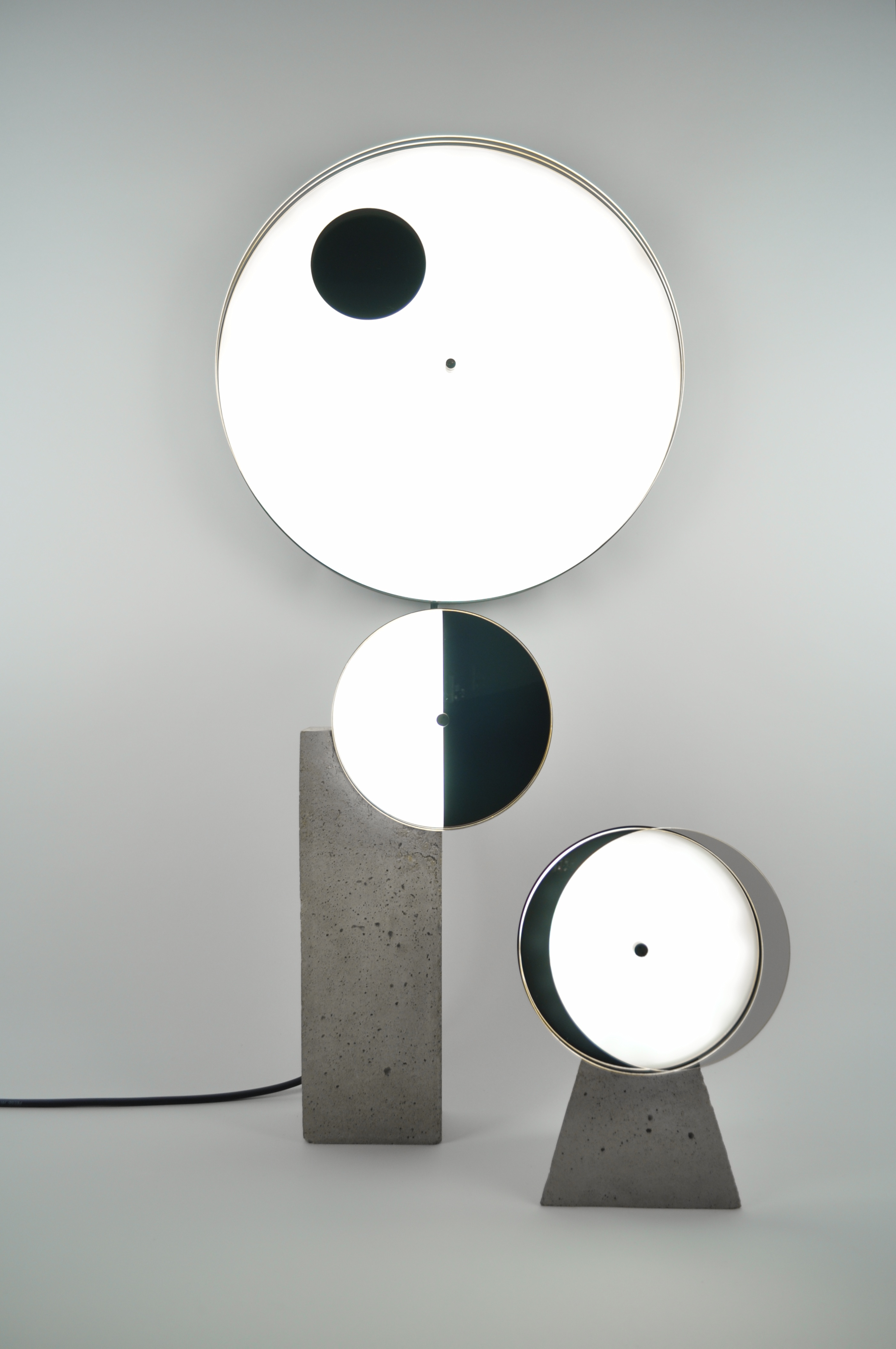
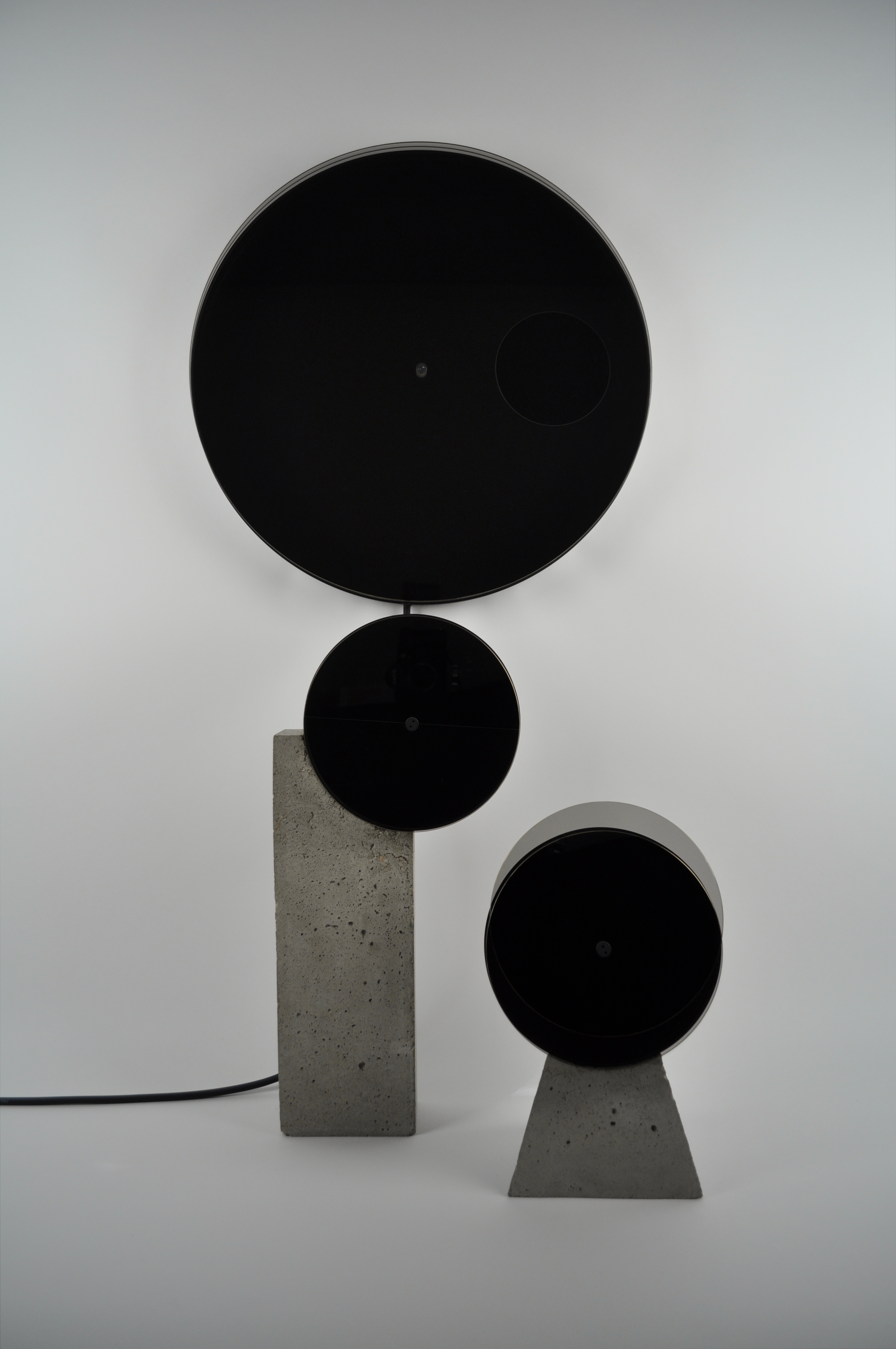
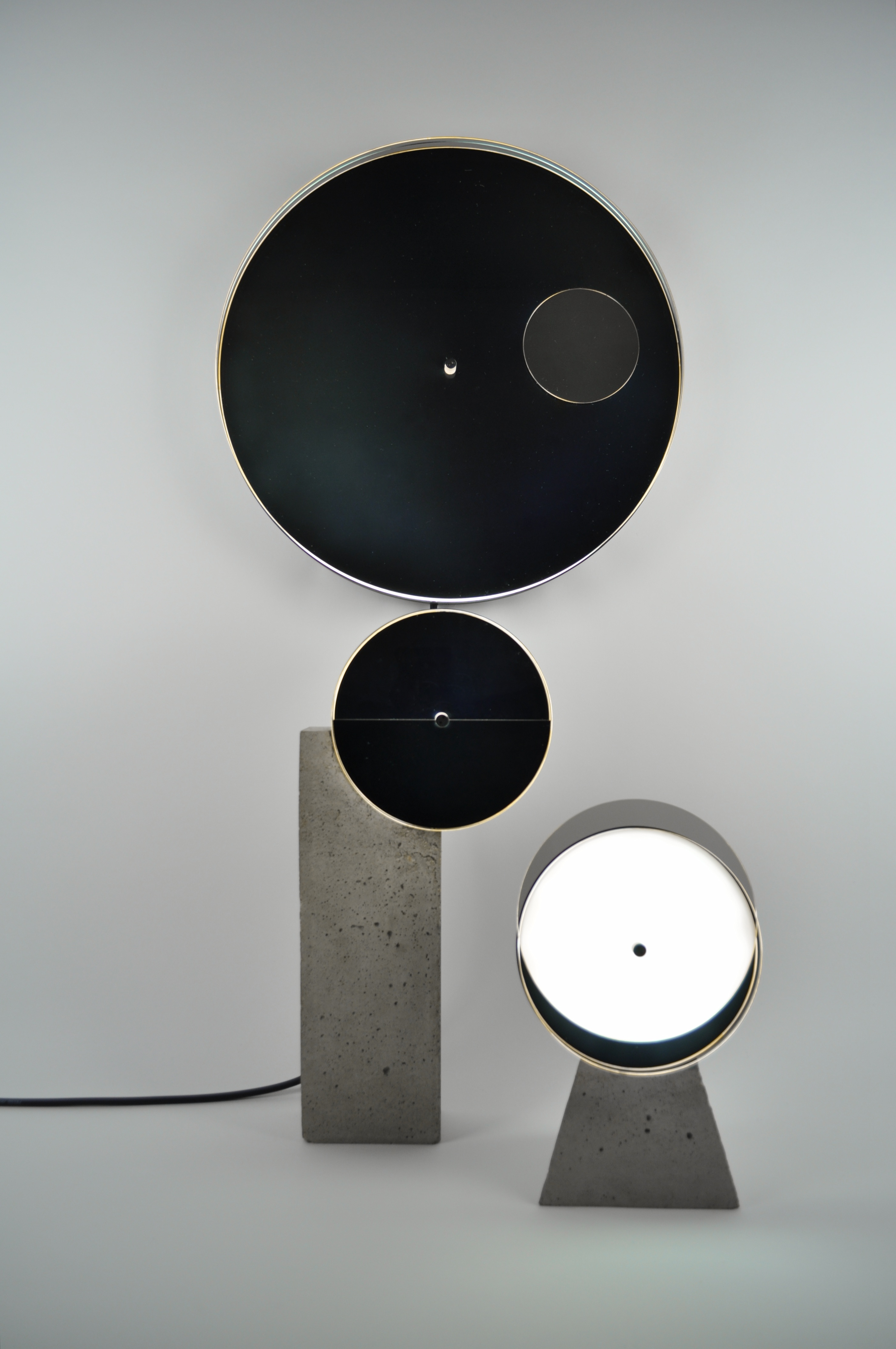

SYZYGY
Series
Series
syz·y·gy [siz-i-jee]
In astronomy, a syzygy is a straight line configuration of three celestial bodies in a gravitational system. The word is often used in reference to the Sun, the Earth and either the Moon or a planet, where the latter is in conjunction or opposition. Solar and lunar eclipses occur at times of syzygy, as do transits and occultations.
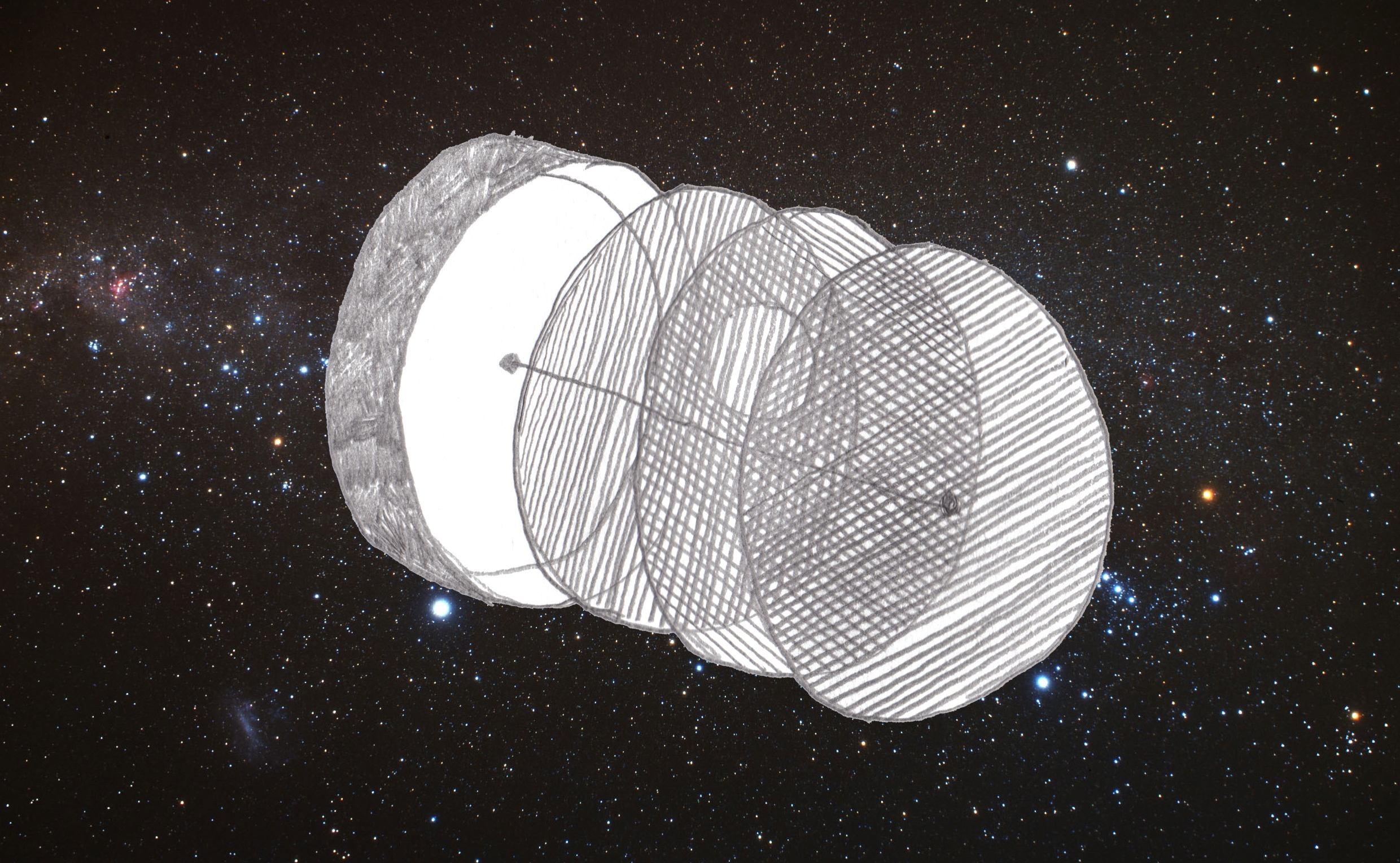
Everyday the sun ‘rises and sets’ making life on earth possible. The sun was our first and only light source, in contradiction to the light sources we have today the sun is a continuously never ending burning ball of fire. We experience night only when a part of the earth is cast into shadow from itself as it rotates around the sun. These new lights are inspired on the same principle, the light source is constant, remaining always on. The light is adjusted by a subtle rotation of three light filtering discs places in front of the light source. The rotational combinations of these three discs mimic the effects of a syzygy. This physical blocking of the light was an important aspect in our concept, where a total of three different lights demonstrate the three different aspects of a syzygy; transit, occultation and eclipse.
The end result is atmospheric light inspired by the sun and its surrounding celestial bodies, where the light quality can be adjust but this time on the human scale.
dimensions:
Phases 100 x 130 x 9 cm
Transit Ø 60 x 4.5 cm
Transit Ø 45 x 4.5 m
Occultation 9 x 20 x 44 cm
Eclipse 17.5 x 12 x 28 cm
edition:
Phases 8 + 1AP + 1P
Transit Ø 60 cm 12+ 1AP + 1P
Transit Ø 45 cm 8 + 1AP + 1P
Occultation 36 + 1AP + 1P
Eclipse 36 + 1AP + 1P
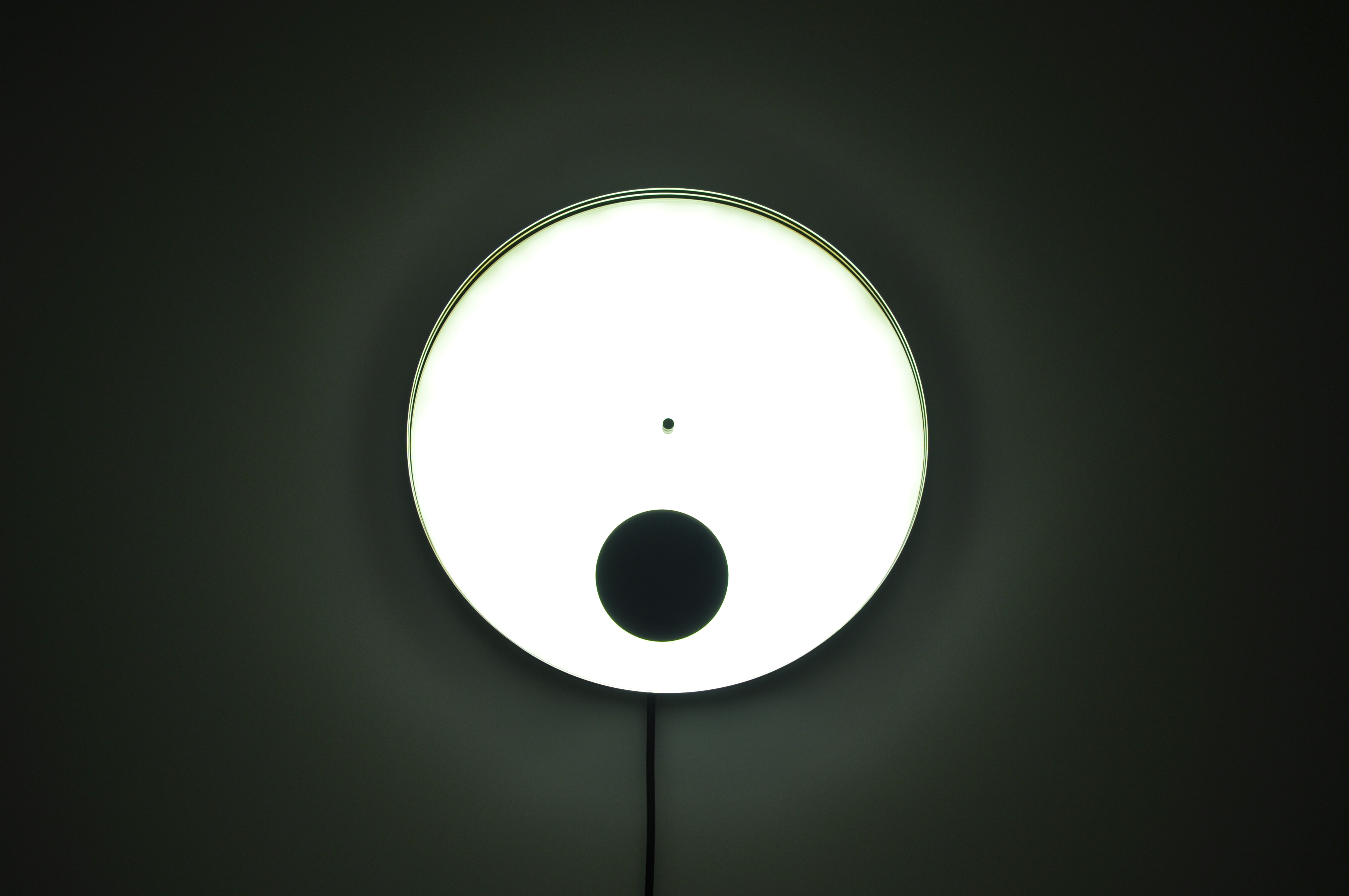
Transit

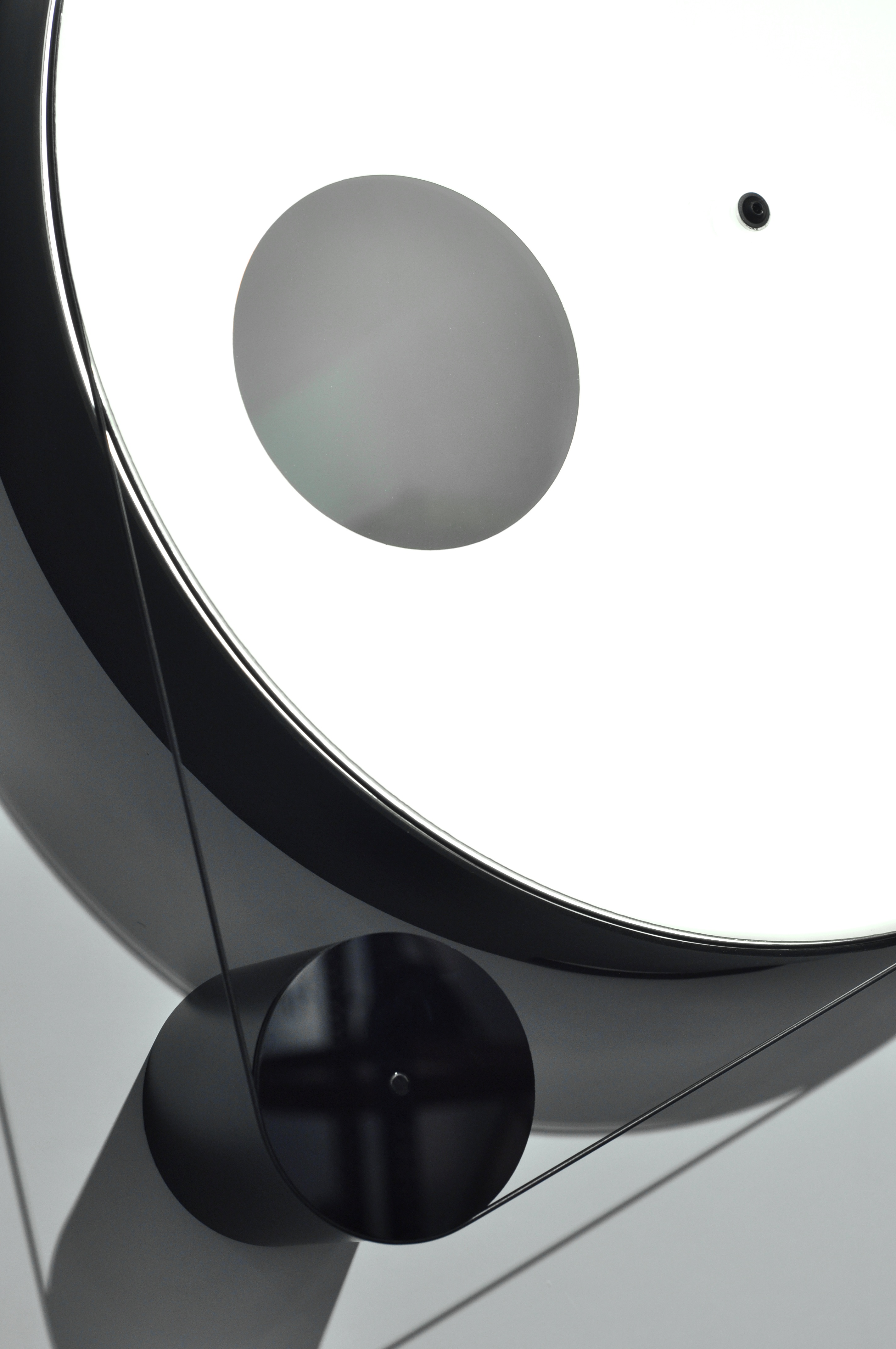

Phases
What differs in the Phases project to the other Syzygy lights is its ability to work automatically and adjust it’s self according to the ever-changing ambient light conditions where it is placed in. An internal computer draws ambient light readings from a light sensor, located in the moon like concrete cylinder lower right. If the computer senses a change it can rotate one of two stepper motors located outside the main light source to change the light filtering discs via rubber cables. If for example a cloud is to pass overhead the light source is adjusted to compensate for the dip in light, this constantly continues the entire day and is calibrated to our sense of time since the Phases light can function to indicate the hour of the day
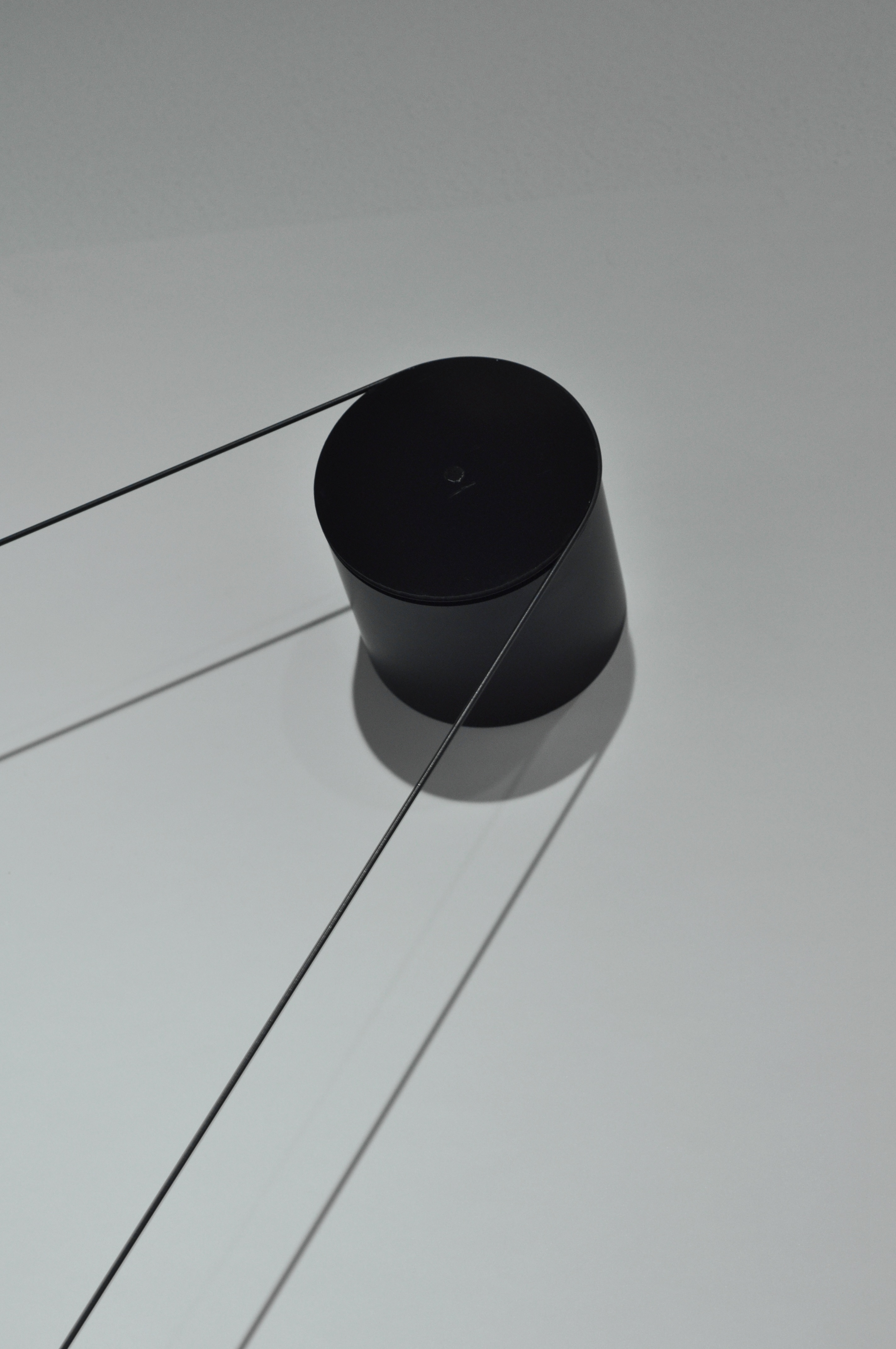







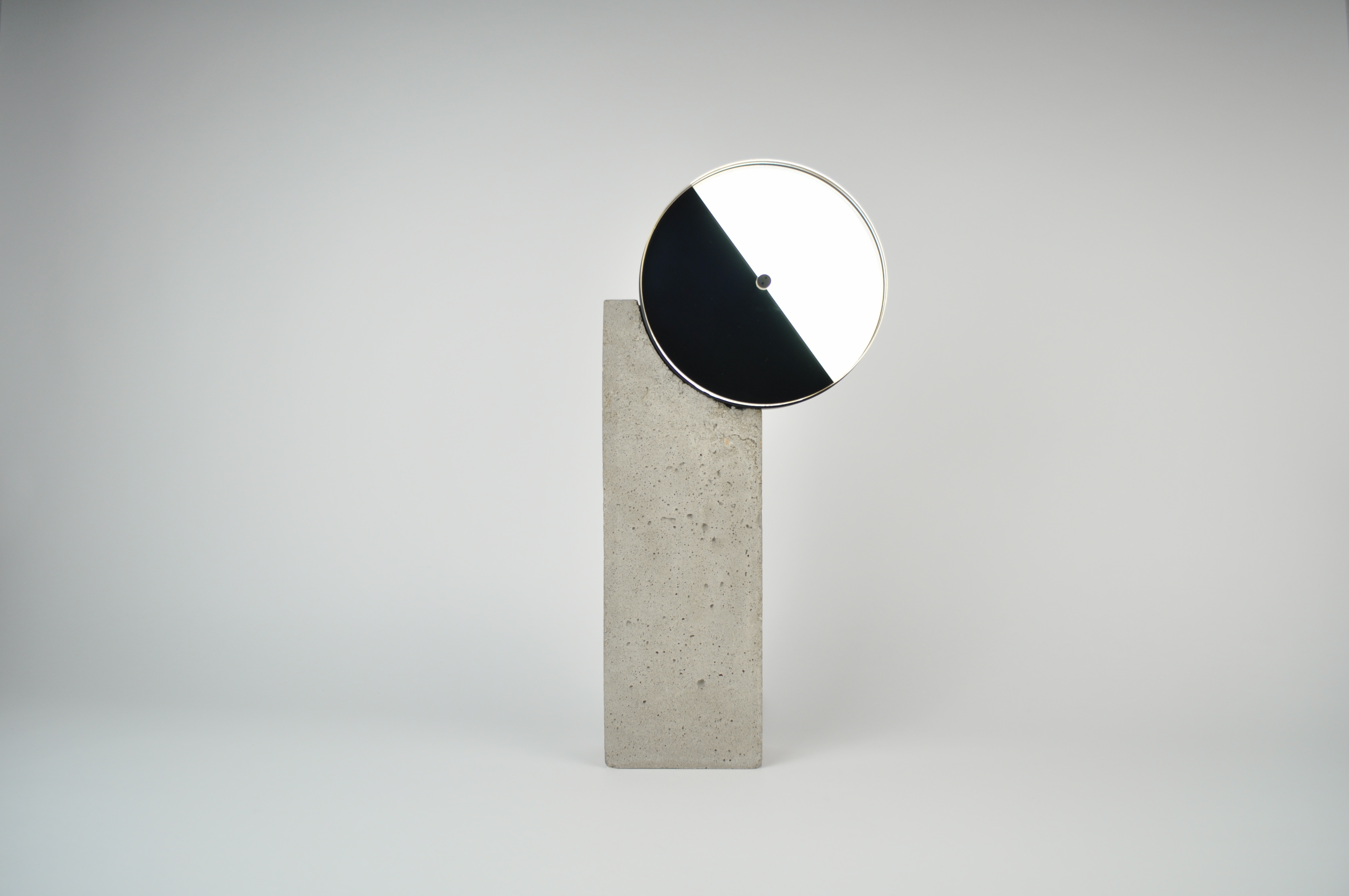
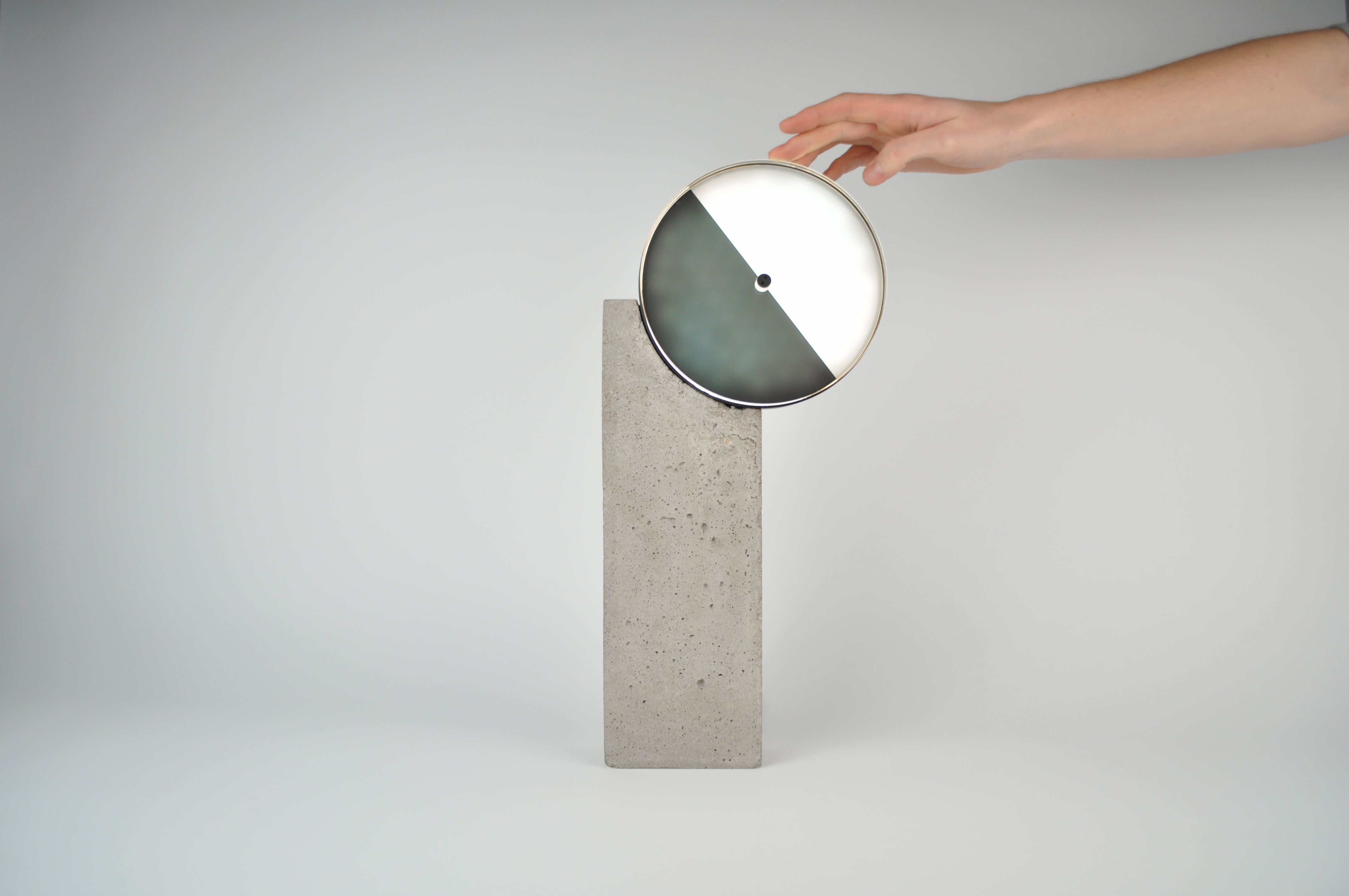





Occultation
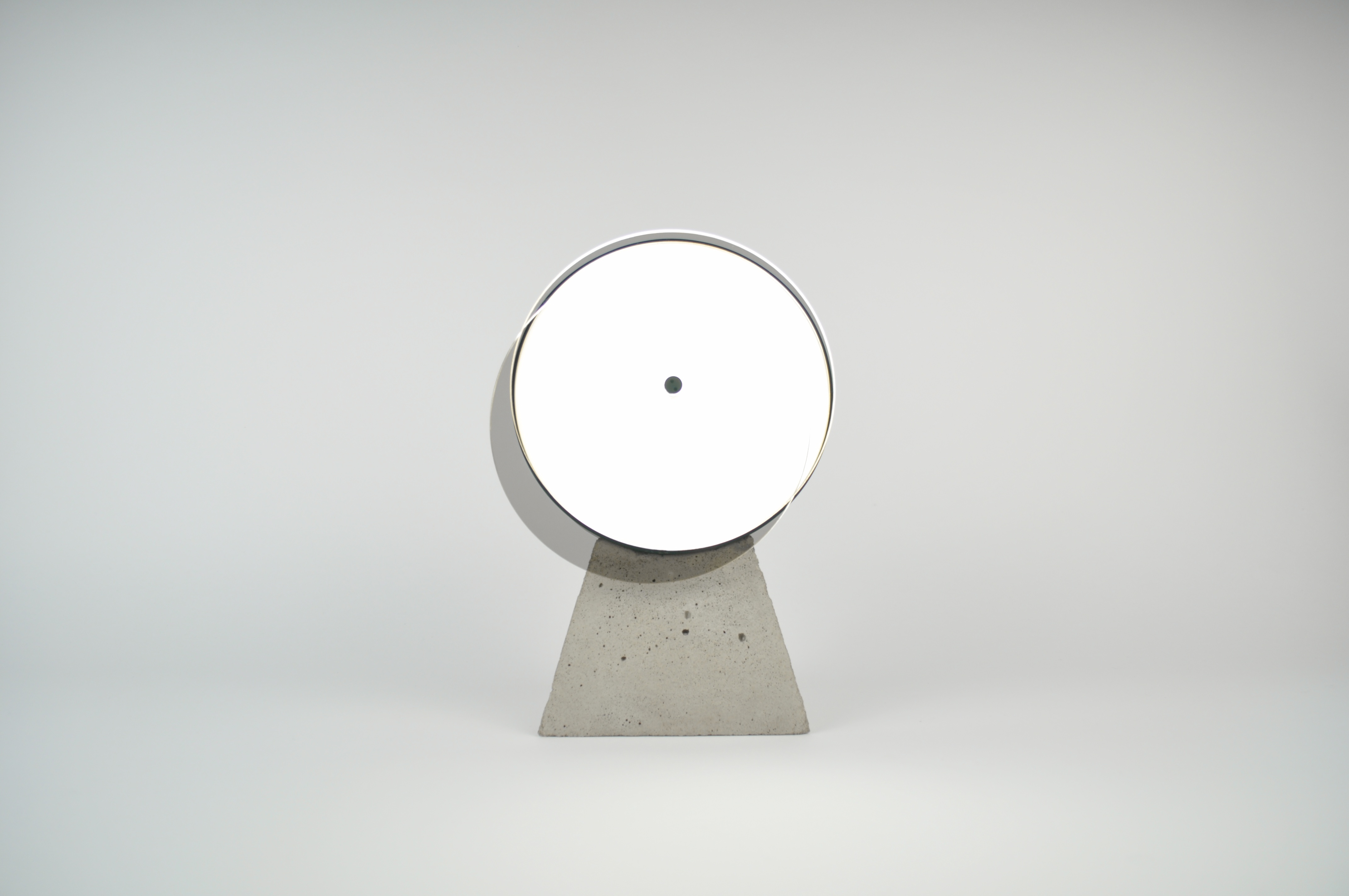
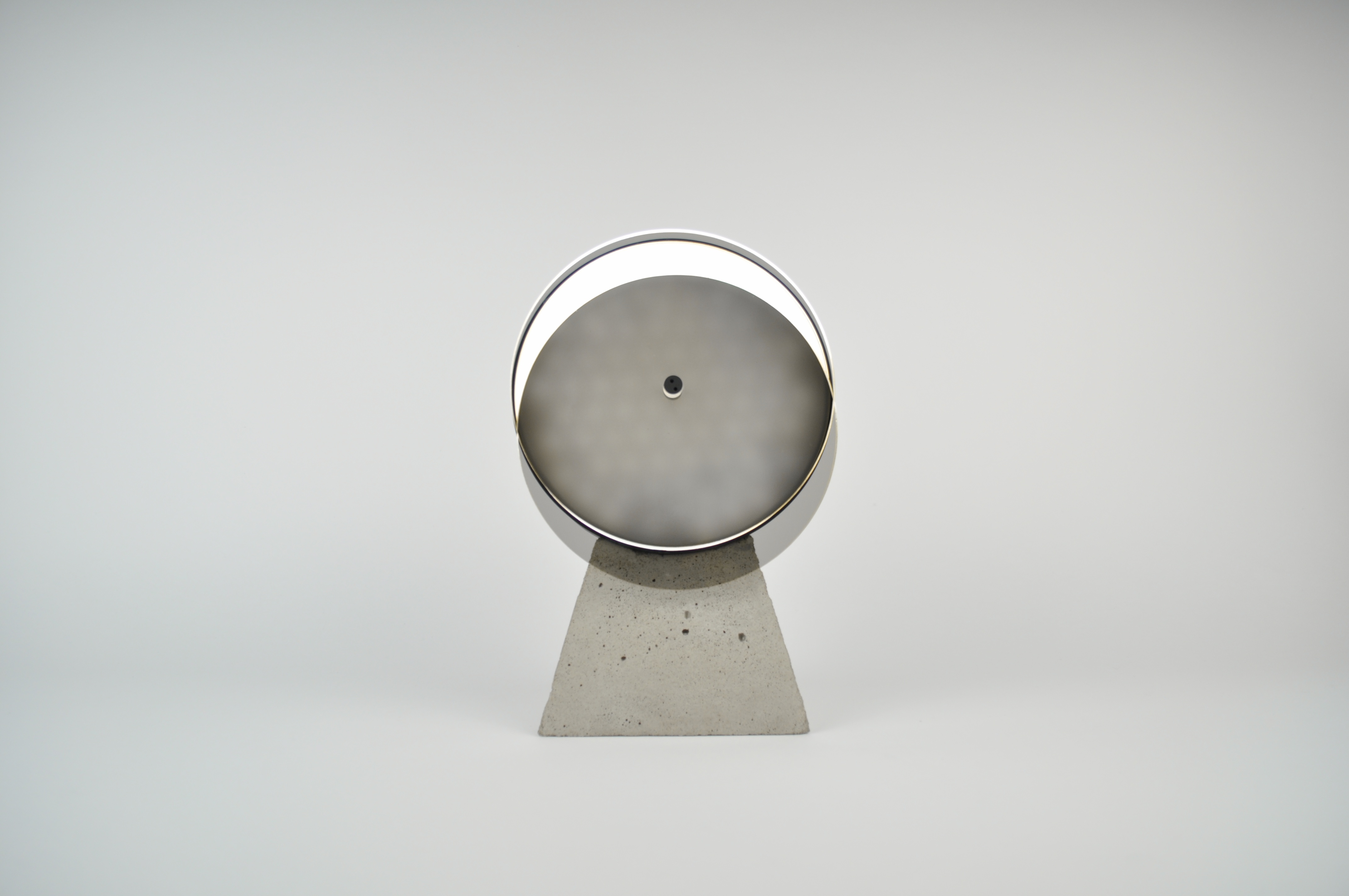
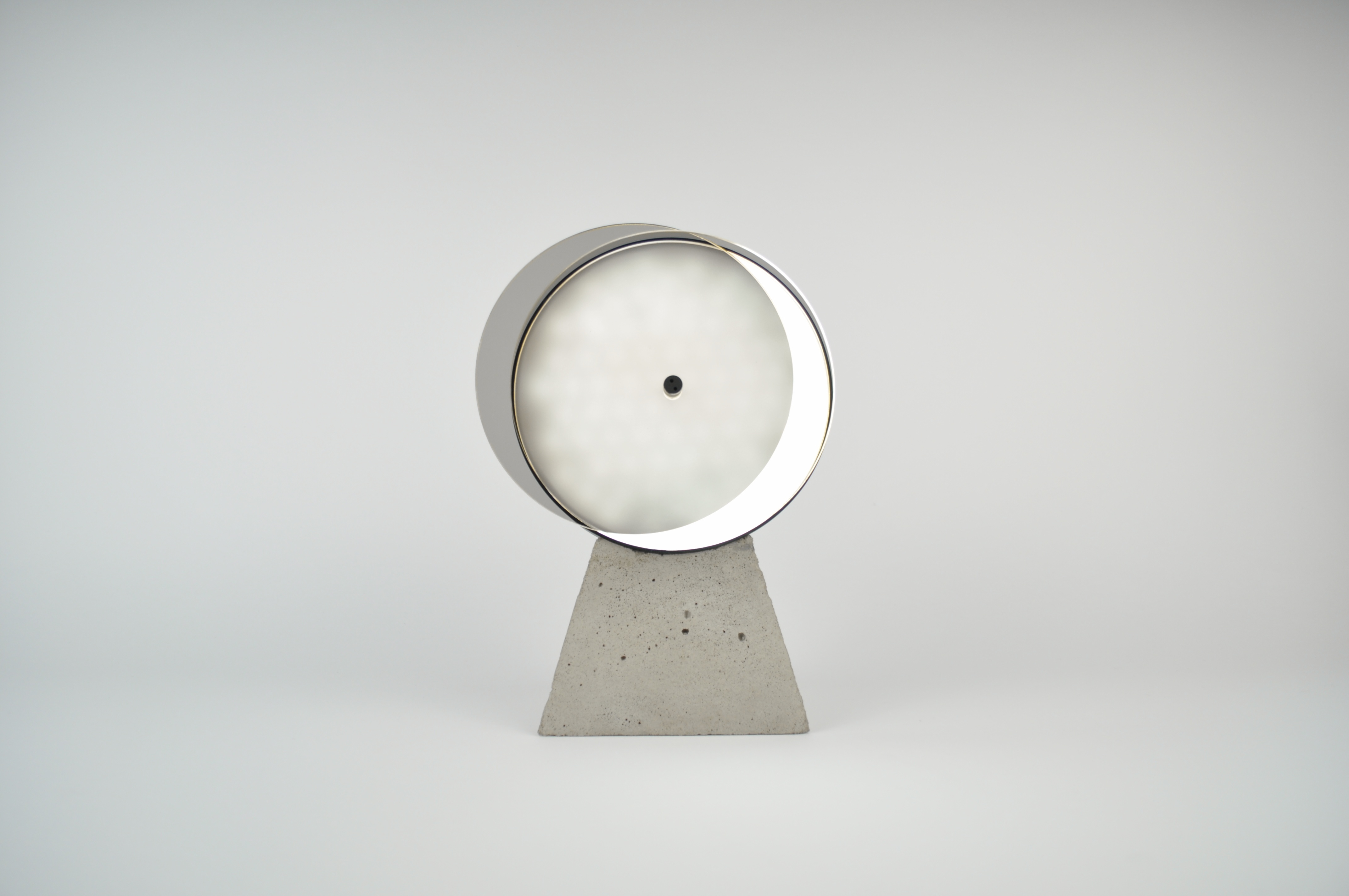
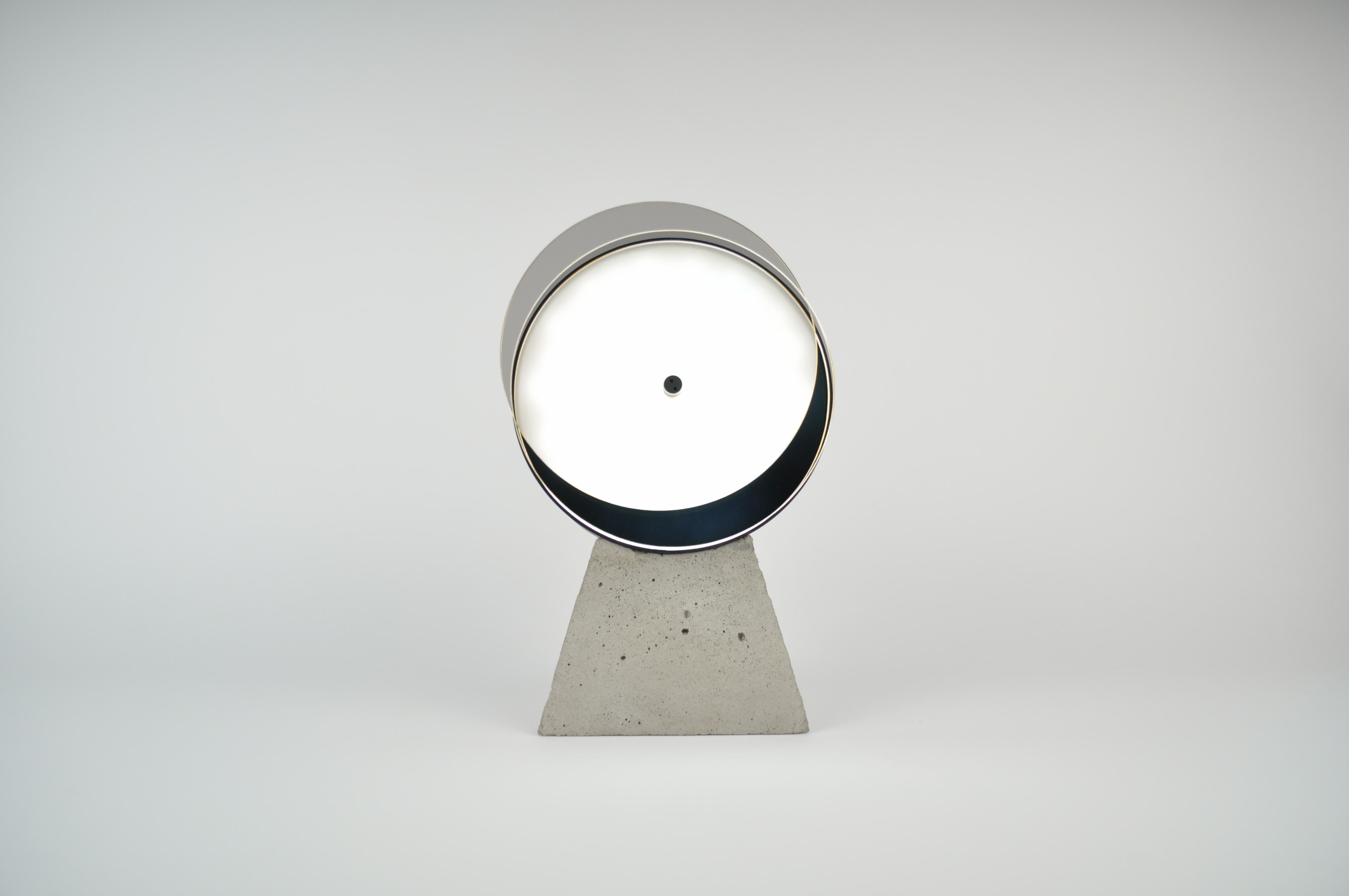

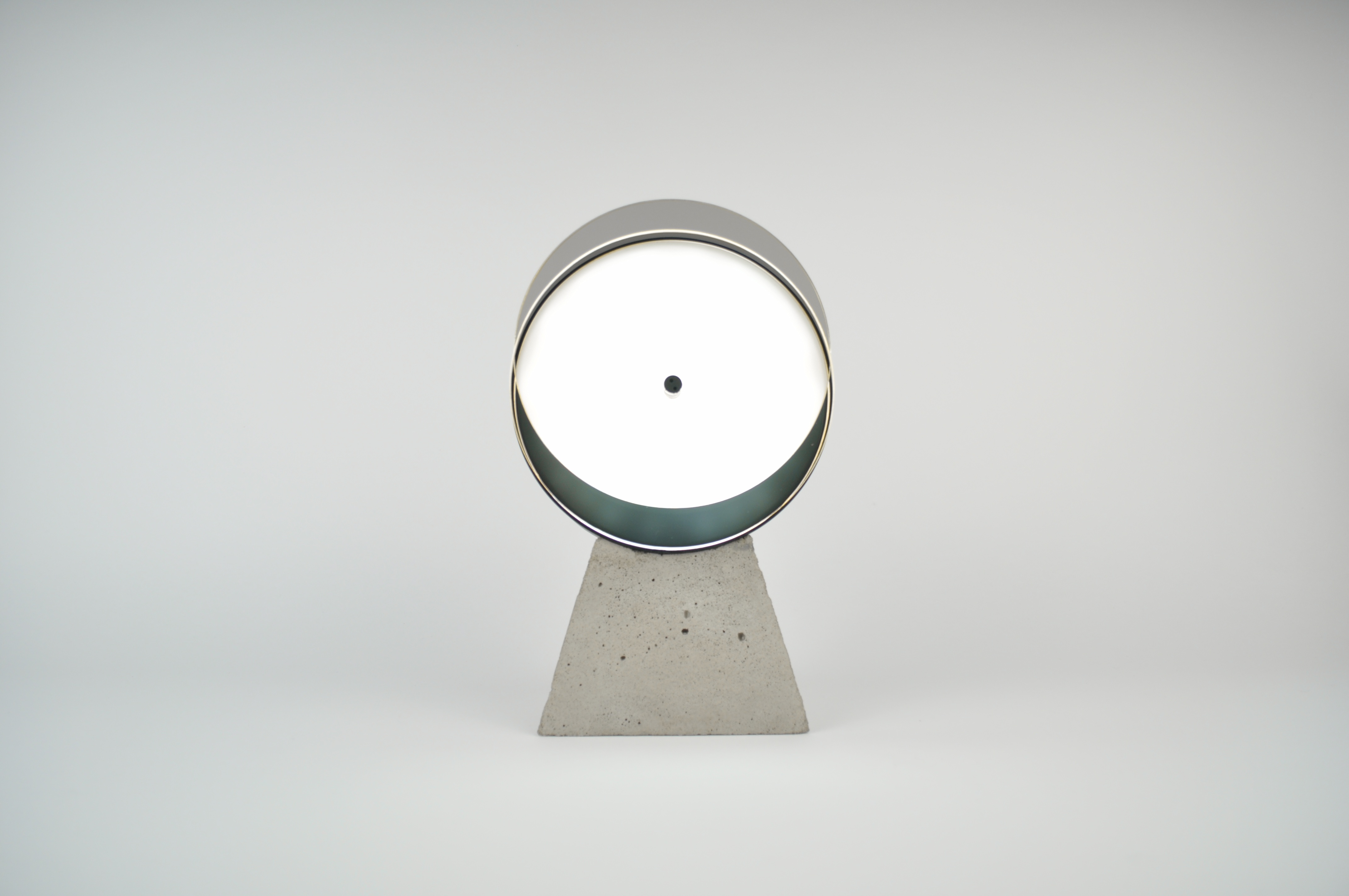
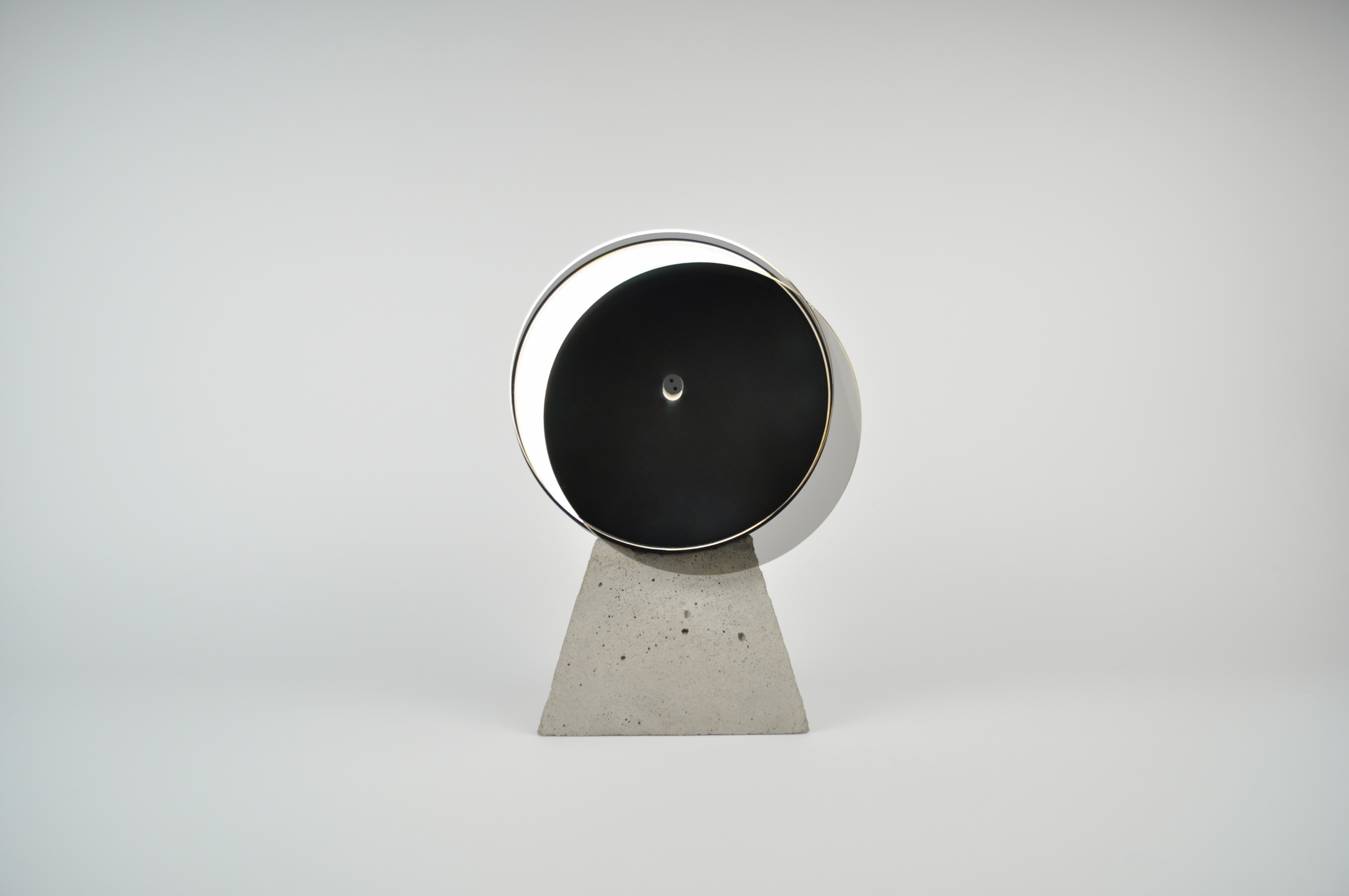
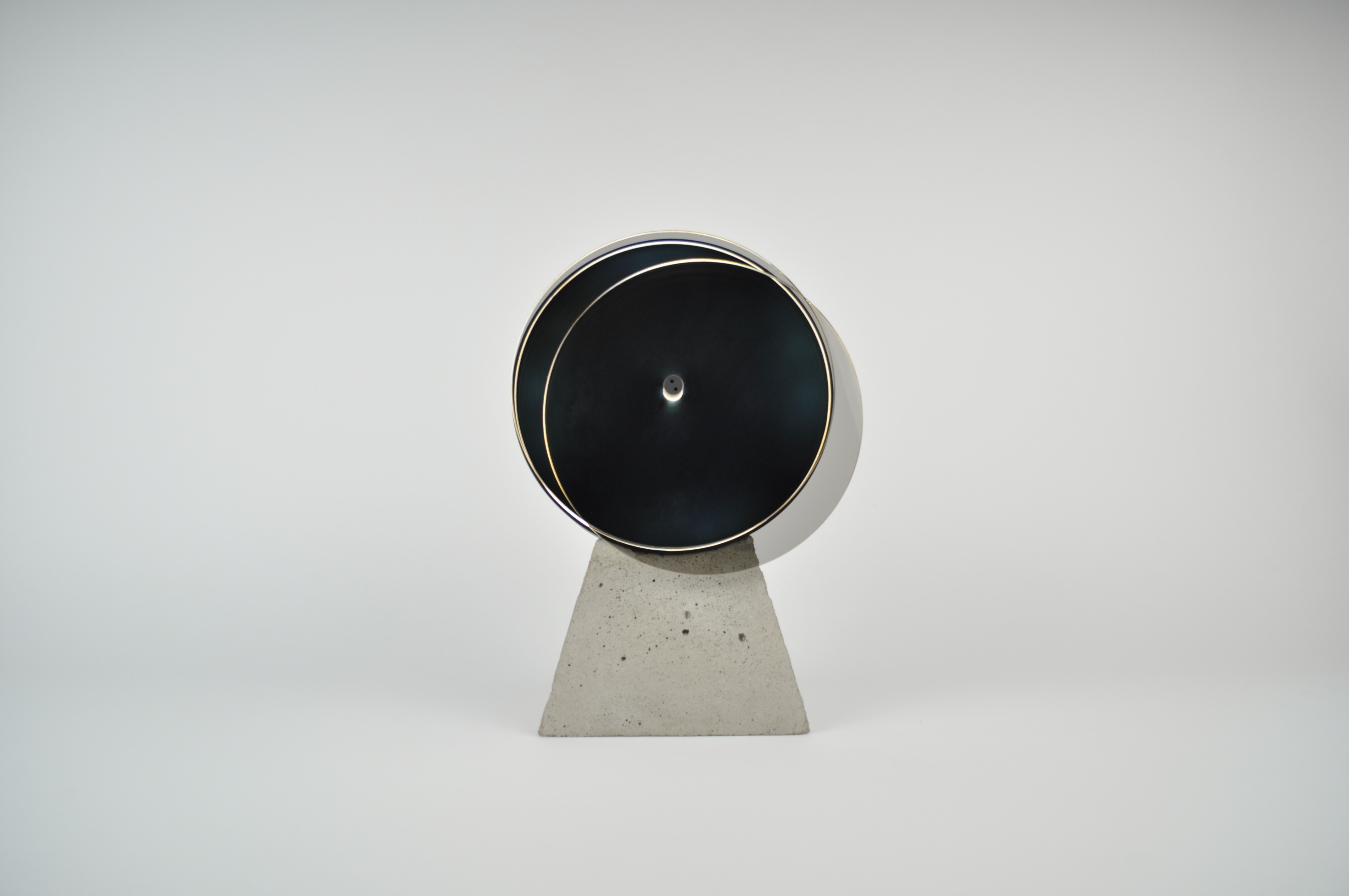
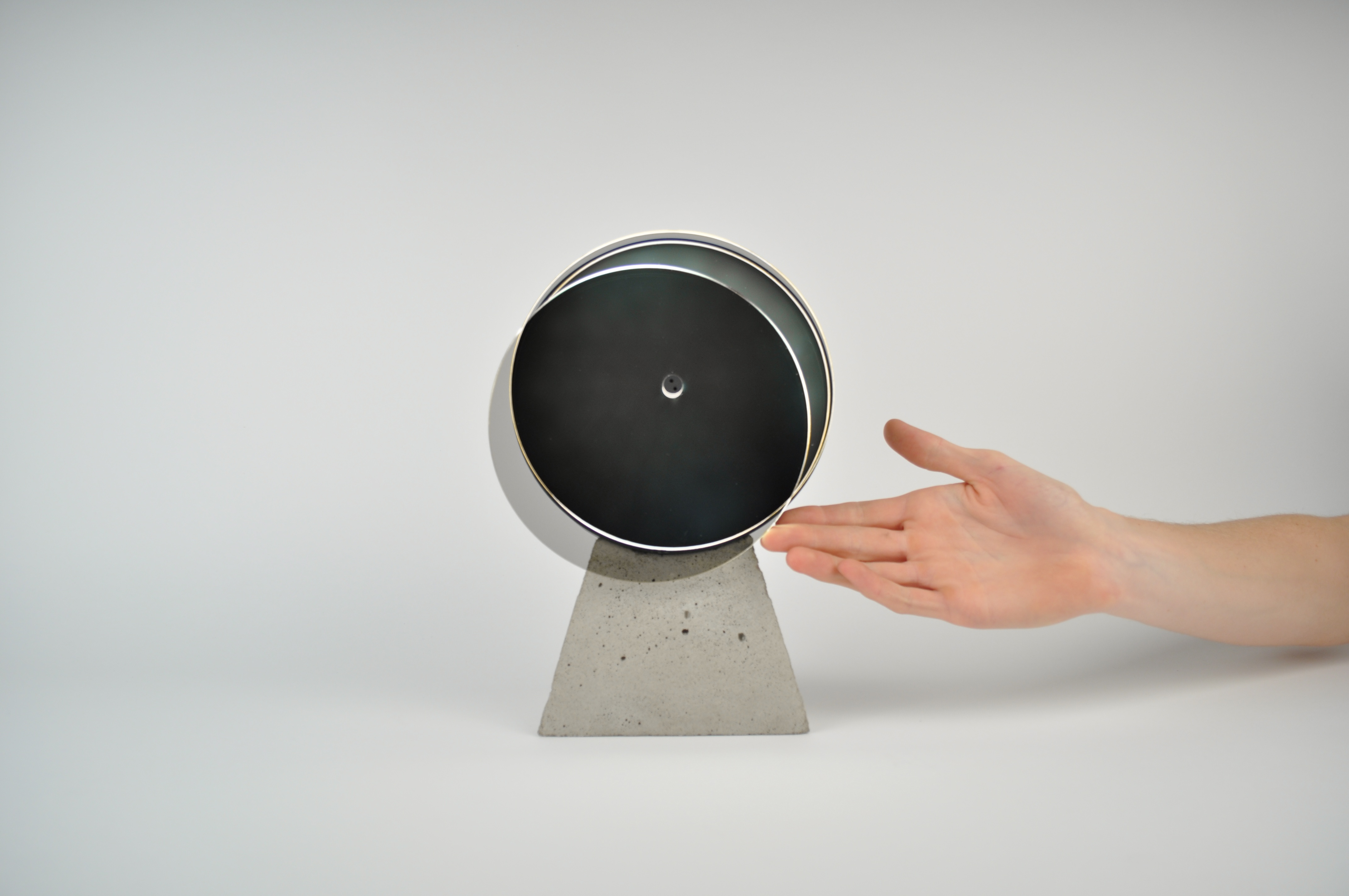

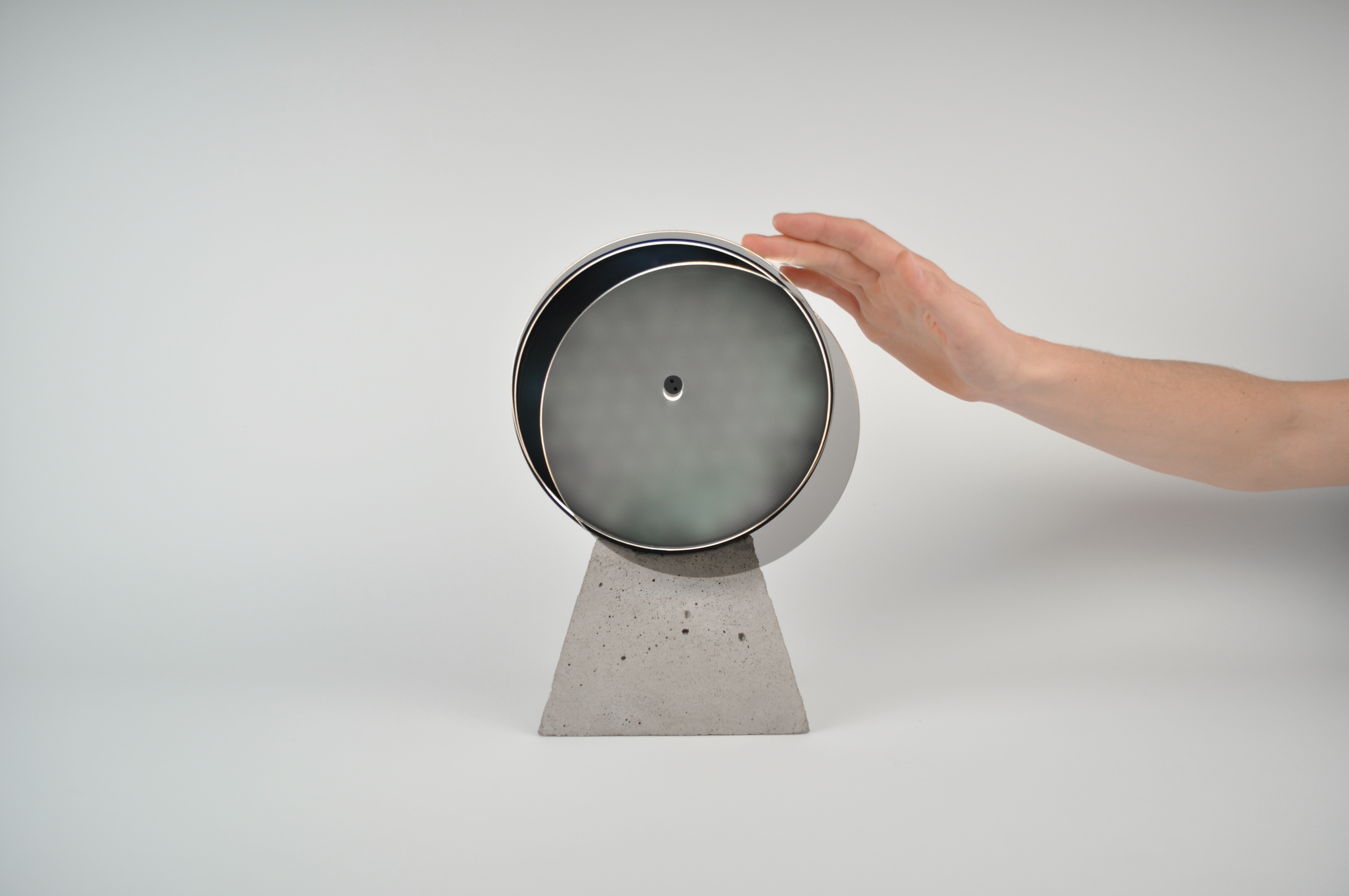
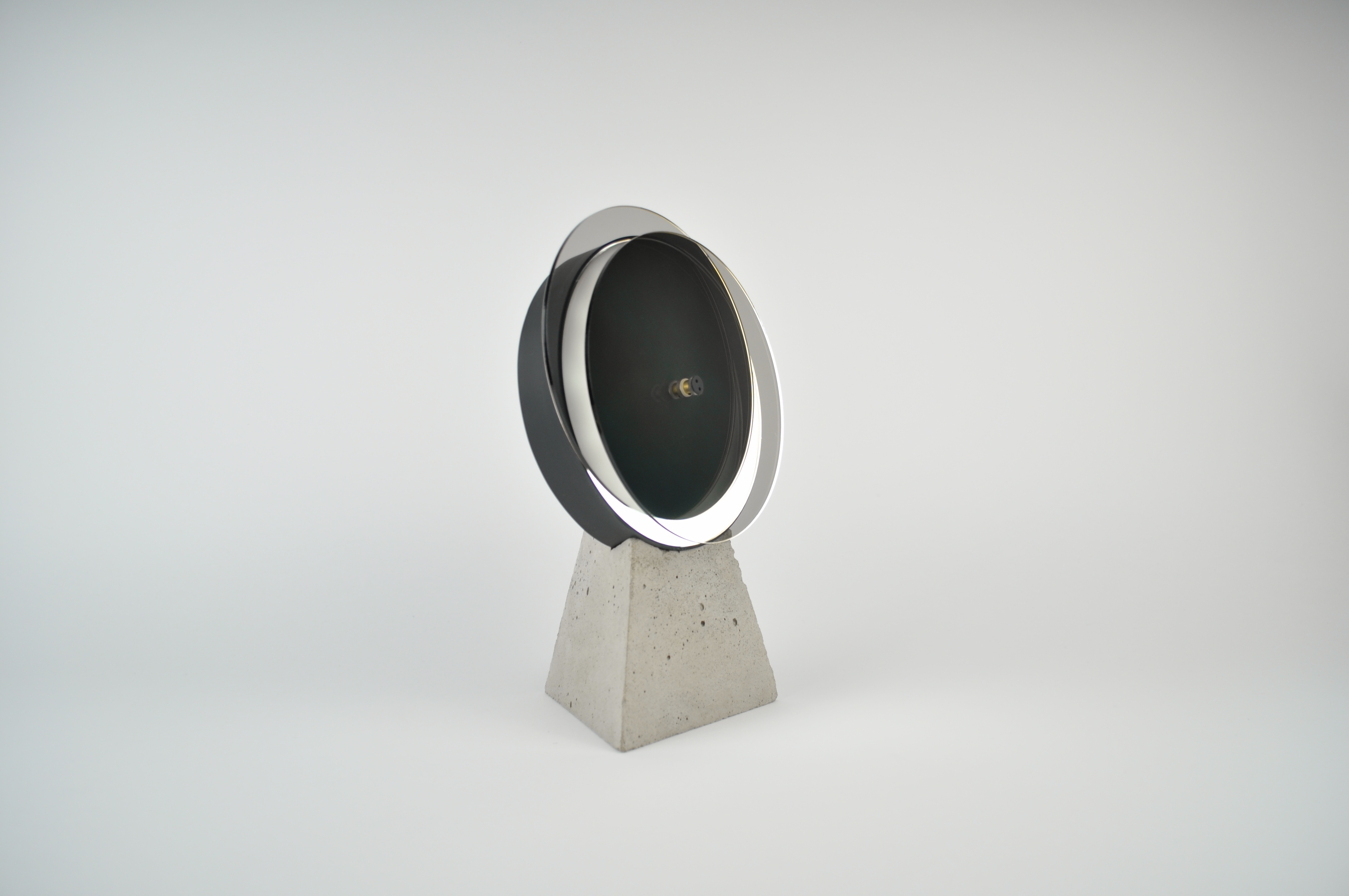


Eclipse
